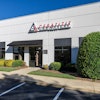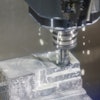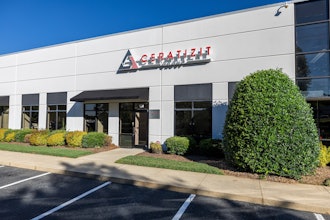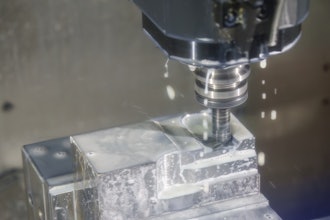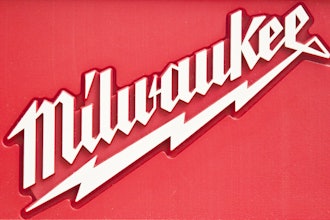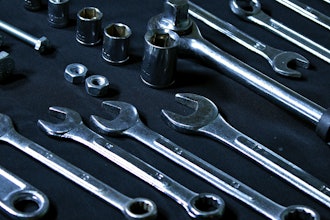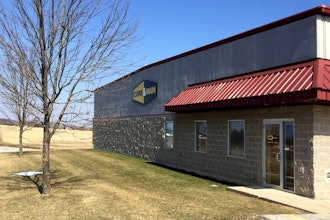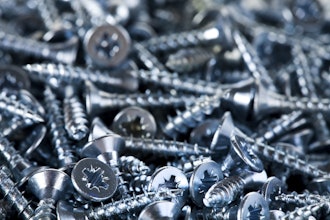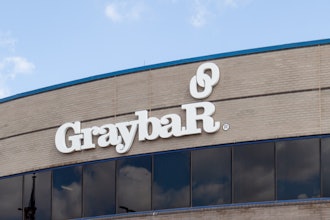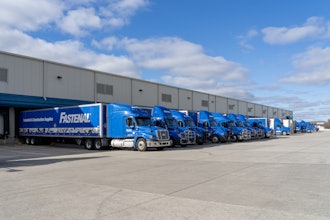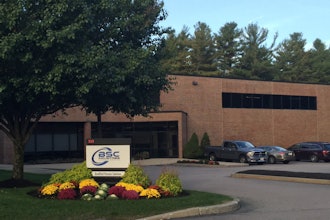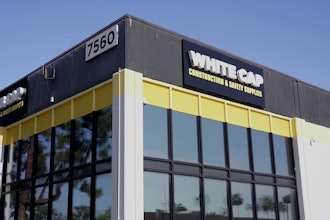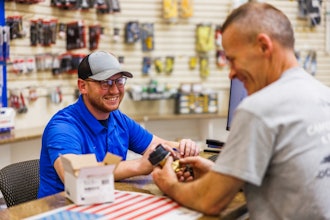With the help of a savvy distributor, Radial Bat has brought the wood bat back to baseball with a new and innovative design supported by advanced adhesive technology.
It started with a simple but brilliant idea. Ward Dill, the President of Radial Bat™, a New Jersey-based company that makes engineered solid-wood baseball bats, wanted to forge a baseball bat from multiple wedges of wood. The path from concept to completion would prove challenging. But with the help of Lanco Adhesives, a New Jersey-based distributor of Henkel adhesive products, Radial Bat has produced a wood bat that is stronger, safer, and more attractive than alternatives.
“I got the idea while tinkering with the branch of a dead apple tree,” recalled Dill. “The branch was still green and wet, so I cut it into wedges and glued them together before shaping it on the lathe. The lines that resulted were beautiful, and I went on to make a cherry wood vase using the same technique. Not only was the result highly attractive, the wedge design was exceptionally strong.”
Prompted by his passion for baseball, Dill thought that the technique could create a superior wood bat.
“Wood bats provide a safer, more authentic batting experience than aluminum or composite bats,” explained Dill. “Aluminum and composite bats are overly powerful, which many think has increased baseball’s dangers and encouraged mediocre hitting technique. Major league professionals, college and high school teams, women’s softball groups, and Little League organizations are prime candidates for a better breed of wood bat.”
A graduate of MIT with degrees in econometrics, marketing, and finance, Dill did some research and determined that a 12-wedge design of ash and maple would ensure that at least three wedges of the bat would always make contact with the ball.
“By orienting them properly,” he explained, “we could produce a tight grain pattern completely around the bat surface.”
With its densely packed wedges, the new Radial Bat looks, feels, and plays very much like a traditional bat cut from a single piece of wood.
“But the comparison ends there,” said Dill. “Because they’re difficult to break and, if they do, they won’t shatter or splinter into broken projectiles.”
Viewed top to bottom, the new Radial Bat resembles a miniature pizza pie made of 12 thin slices. However, assembling 12 radiating triangles of dense wood grain divided by faint lines posed a major challenge.
“Getting a tight uniform bond was difficult and time-consuming,” said Dill. “We used a consumer-grade liquid polyurethane (PUR), which foamed messily and didn’t penetrate the wood grain enough for reliable seams. Worst of all, it had a 90-minute setting time, which hampered our manufacturing speed and efficiency.”
As a result, Radial Bat manufactured only a limited number of bats the first year.
Collaboration and Coordination
At that point, George Gunia of Lanco Adhesives proposed a different kind of PUR adhesive from Henkel Corporation.
“Henkel’s experts suggested a one-part liquid PUR that offered a much faster setting time and better penetration,” said Gunia. “And unlike PVA or formaldehyde-based products, this PUR adhesive is very flexible and pliable.”
Although typically used in exterior door manufacturing, recreational vehicle assembly and structural engineered wood in bridges and commercial buildings, Gunia thought Henkel’s PUR adhesive would be ideal for absorbing the high-impact stresses of a ball striking a bat.
Gunia showed Dill and Bill Lowndes, Radial Bat’s Production Manager, data about the adhesive’s open time, set time and bond strength, and advised them on application issues.
“We conducted stress tests,” said Dill, “and we wailed on those bats. We also subjected them to snow and rain for weeks. The glue did a spectacular job in terms of durability and maintaining of the feel of the bat over time.”
Radial Bat constructs its bats manually. Twelve wedges are spread out flat, adhesive is applied by roller, and the wedges are bundled together into hexagon-shaped billets. Then the billets are pressed under 36 tons of pressure. After the adhesive bond sets, the billets are sent to a lathing facility to be shaped into bats.
“The faster setting time of Henkel’s PUR adhesive cut our manufacturing time by two-thirds, exponentially boosting the number of billets we could produce,” said Dill. “As a result, we’ll produce over 20,000 bats this year.
“George showed us how to use the adhesive to increase our production rate without incurring the expense of adding more sophisticated production line processing work,” Lowndes added.
Teamwork Pays Off
The coordinated efforts between distributor Lanco and manufacturer Henkel paved the way for Radial Bat’s transition to the new adhesive. At Guina’s request, Henkel’s technical service team advised how to optimally speed the manufacturing process.
“We wanted to accelerate press time as much as possible but still have the handling time necessary to accommodate a manual process,” said Gunia. “There’s a tricky balance between using the glue by hand, brushing it on, and putting the parts together before the glue begins to set and catalyze by itself.”
During the transition, the Radial Bat team wanted a more efficient way to store and dispense the adhesive than the sample-size and small containers they were using. Gunia contacted Peter Dolan, Marketing Director, at Henkel. Dolan worked with Gunia and Lowndes to install a 110-kilogram drum with a dispensing hose and desiccant tubes to prevent moisture from entering the container. He then instructed Radial Bat’s staff on how to properly handle the container and dispensing mechanism.
Distributors are Empowered
Accessibility and collaboration make the Lanco-Henkel partnership different than most distribution-manufacturer relationships.
“Henkel listened to George about what his customer was doing,” said Dolan. “We considered the product they were using, and selected an adhesive that could perform better and add more value.” Gunia added, “Our access to people at Henkel was a big plus. They know adhesives inside and out. When we get opportunities, we can find people to assist us.”
“By the same token” said Dolan, “our distributors bring Henkel products into new markets and applications that our direct sales force can’t reach. Lanco’s success with Radial Bat is a prime example.”
Performance is a Home Run
For Dill, the Lanco-Henkel collaboration enabled him to merge his business smarts with his love of baseball, and the result is truly satisfying.
“Our new bat is a distinctive, attractive alternative to overly powerful aluminum and composite bats,” he said.
Many people agree. Ken Eriksen, Assistant Coach of the Team USA Women’s Softball team, is endorsing the Radial Bat. Several baseball training academies are selling the bats, as are a number of sporting goods stores. And Kevin Long, hitting coach of the New York Yankees, has produced a training video featuring Alex Rodriguez using the new Radial Bat.
“Bats produced by the major manufacturers vary greatly in quality,” said Dill. “We offer one class of product. The Radial Bat used by the Little League kid is the same quality as the Radial Bat used by Alex Rodriguez.”

